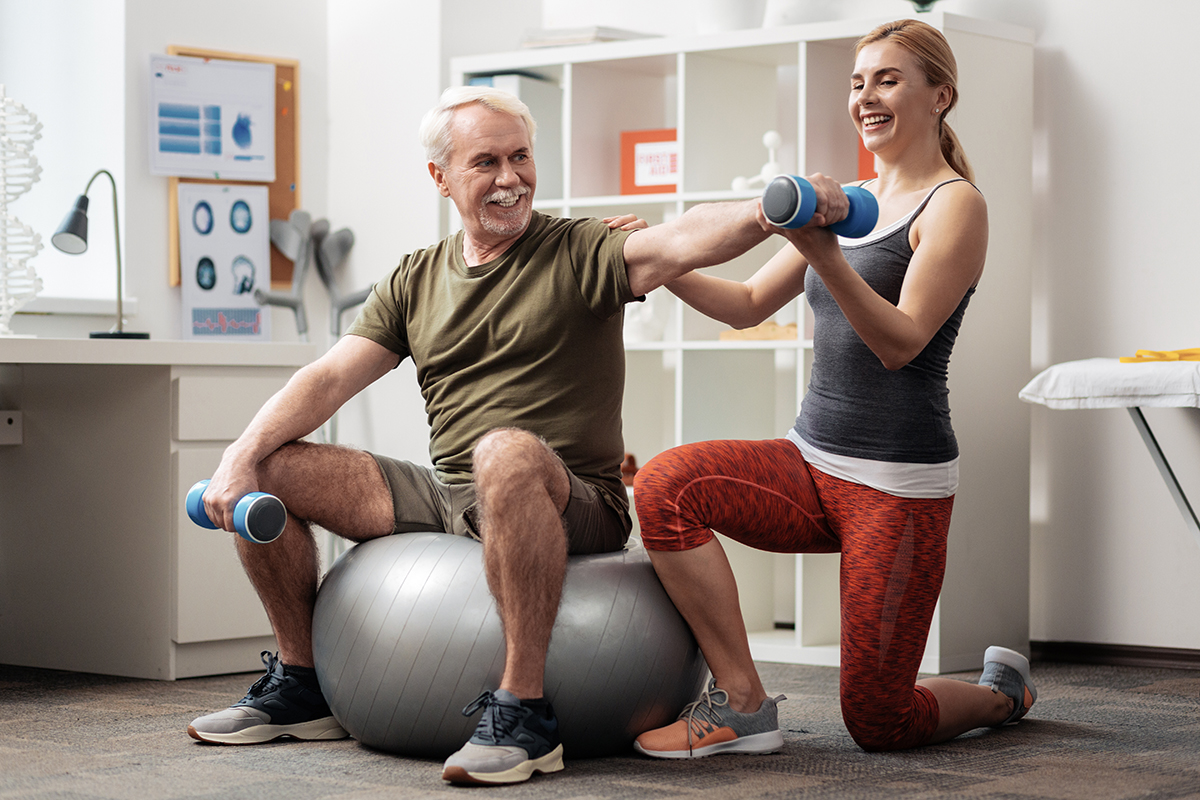If you are a fitness or medical fitness professional, there is a good chance you have heard one or more of the following statements at least once in your career. In fact, there is also a good chance you have heard these statements on a daily basis.
1. I am a little tired and my muscles are a little sore from our last session, so I am going to cancel today and rest.
2. I don’t want to do “that exercise” because I have never done it before.
3. My doctor told me that I should not be squatting, bending, reaching, twisting, etc…
Many of you reading this article can relate to at least one of the above and may have even let out a slight sigh of frustration when it comes to overcoming challenging clients. Overwhelming amounts of research show that exercise can help to improve your health and fitness without hurting your joints.(1) With your current treatment program, exercise can:
- Strengthen the muscles around your joints
- Help you maintain bone strength
- Give you more energy to get through the day
- Make it easier to get a good night’s sleep
- Help you control your weight
- Enhance your quality of life
- Improve your balance
However, many of our clients still believe that exercise will aggravate their joint pain and stiffness, but that is not the case. Lack of exercise actually can make your joints even more painful and stiff.(2) If the muscles and surrounding tissue are strong, it helps to maintain support for your bones. Choosing not to exercise weakens those supporting muscles, creating more stress on your joints.

While fitness and medical fitness professionals understand the importance of exercise, the way we translate this to our clients is key. Oftentimes, clients receive misinformation along with mixed messages from doctors, family members, friends, and of course, social media. However, after decades of both academic and professional research working with special demographics, I have discovered a powerful technique to increase clients’ willingness to improve their health through exercise. The answer lies not only in showing the client how each exercise emulates real-life situations, but also how it affects their independence.
For example, telling a client, “Today we will be working on how to safely and effectively execute a squat,” is a lot different than saying, “Today we will be practicing our sit to stand movements so that you have the lower body strength and flexibility to rise from your favorite chair without assistance.”
Most importantly, it is important to reiterate to your client that their lack of strength, mobility, and balance leads to a more sedentary lifestyle that will decrease their ability to function independently as time progresses. Additionally, muscle atrophy, joint immobility and poor flexibility are key indicators that functional movements, or movements that are required to perform everyday tasks, will soon be a thing of the past.
If a client is unwilling to perform various exercises, here are some conversation starters:
- Did you know that this is not just an exercise, but one of the foundational movements to support strength, balance and flexibility in your everyday life?
- Do you know the definition of functional fitness?
- Do you know that this isn’t just an exercise, but will help you walk up and down the stairs, get up from a seat, carry your groceries, and pick up a grandchild?
- Are you ready to give up your independence?
Christine M. Conti, BA, M.Ed, is an international fitness educator and presenter. She currently serves as the Director of Membership for MedFit Network, sits on the MedFit Education Advisory Board and is a course author for MedFit Classroom. She is also CEO and founder of ContiFit.com and Let’s FACE It Together™ Facial Fitness & Rehabilitation and co-host of Two Fit Crazies & A Microphone Podcast.
Check out Christine’s online course with MedFit Classroom, Arthritis Fitness Specialist:
References
- CDC: Division of Nutrition, Physical Activity, and Obesity, National Center for Chronic Disease Prevention and Health Promotion. (2021, April 5). Benefits of Physical Activity. Center for Disease Control and Prevention. Retrieved September 10, 2021, from https://www.cdc.gov/physicalactivity/basics/pa-health/index.htm
- Mayo Clinic. (2021). Exercising With Arthritis: Improve Your Joint Pain and Stiffness. Mayo Clinic. Retrieved September 9, 2021, from https://www.mayoclinic.org/diseases-conditions/arthritis/in-depth/arthritis/art-20047971

